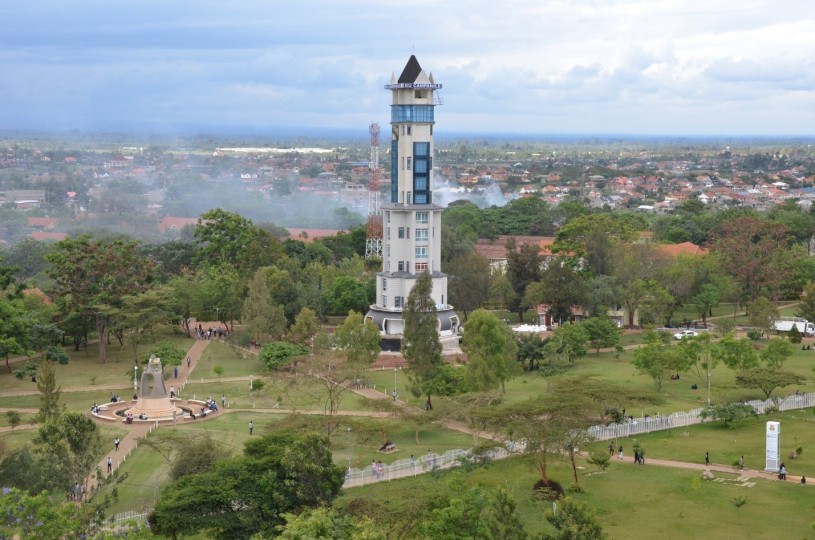Image: KU exercise on importance of handwashing and hygiene in the prevention of SARS-CoV-2 transmission.
At a time when deadly infectious diseases continue to emerge and re-emerge, the need for public health systems, is increasingly critical, working alongside medical interventions, to prevent, detect, and respond. In Kenya, the health landscape has been dominated by infectious diseases for a long time, with gaps in human resources, medical supplies, and health data systems undermining our ability to tackle the country’s infectious disease burden. With this in mind, Kenyatta University (KU) began mobilizing efforts to address these issues. Our intention is to develop a post-graduate course in infection prevention and control (IPC) that will produce a trans-disciplinary team of professionals well-equipped with the skills and knowledge necessary to address infectious diseases.
Consequently, when we came across the Sustaining Technical and Analytic Resources (STAR) Collaboration Laboratory (CoLab), we were excited about the prospect of garnering support towards our objective, which aligned well with STAR’s goal of strengthening the capacity of global health professionals and academic institutions. Following the grant award in 2019, we eagerly began designing a curriculum aimed at enhancing IPC competencies within the country. The curriculum will also address factors that contribute to infectious disease transmission and outbreaks and promote research.
KICKING OFF THE PARTNERSHIP
At the start of the CoLab, KU entered a newly established partnership with Valley View University (VVU) in Ghana, who also submitted a proposal expressing interest in curriculum design and implementation. This partnership was an ideal opportunity to tap into the wealth of collective knowledge and experience among members of this project team. We began with developing a valid and reliable tool that would allow us to objectively evaluate curricula, their design, and implementation from both institutions. This tool will be used to develop feedback that will act as a blueprint for improvements in these areas, an approach that we hope other academic institutions adopt to improve student learning. For KU, this project has meant moving away from the existing emphasis on traditional education to designing an IPC curriculum that responds to our population through careful consideration of the exact competencies needed to tackle existing challenges and the ideal teaching approaches suitable for promoting these competencies amongst learners.

Image: Aerial photo of Kenyatta University (KU) Main campus spread across 1000 acres and located 16 kilometers from Kenya’s capital city Nairobi. The tall building pictured is the University campanile that chimes at the turn of every hour, a sound heard across the campus and has become part of our tradition.
INFRASTRUCTURAL CHALLENGES POSING A MAJOR IMPEDIMENT TO INTERNATIONAL COLLABORATIONS
It is not a surprise that coordinating a research project involving partners based in different countries has its challenges. From the beginning, we began to understand the technological challenges that could significantly impact our project. Sub-Saharan Africa has made great progress in telecommunications coverage, but poor investment in electricity-generating capacity meant project members from both institutions would sometimes find themselves in the middle of a blackout and unable to join video conference calls. In addition, lack of consistent high-speed Internet in both countries left our video conference calls fractured and incomplete, with frequent occurrences of frozen images and choppy audio.
Image: Kenyans on Twitter have over the years consistently voiced their frustration over continued blackouts and poor internet connection. Twitter is amongst the most popular social media platforms in Kenya. The high number of active twitter users alongside users of other popular social media platforms spread across the country highlights the role of social media.
DOING MEANINGFUL WORK WITH…WHATSAPP GROUP CHATS?
Due to the connectivity challenges faced, we have relied on WhatsApp group messages to avoid siloed communication and ensure collaborative decision-making. We quickly found that WhatsApp was a promising solution to our communication challenges. It facilitated instant communication among project team members, created a shared space for discussion, and allowed us to share multimedia content. To our pleasant surprise, the group chat platform has created a vibrant and engaged project team that continues to work together with ease. For instance, through ongoing WhatsApp conversations, together KU and VVU were able to delegate tasks, answer questions, and provide each other with input in order to complete the development of the joint evaluation tool, as well as record responses to the partnership assessment tool.
HELP US SHAPE THE FUTURE OF INFECTIOUS-DISEASE EDUCATION
The ongoing COVID-19 pandemic has undoubtedly highlighted the need for real change in how we interact and operate. At present, the culture of organizational functioning in Kenya is heavily reliant on face to face (in-person) interactions, as such a lot of operations in multiple sectors have been significantly and negatively affected by current restrictions. For those of us in education, this has prompted us to begin to look at remote learning as an urgent reality than just a distant idea. Notably, WhatsApp group chats have already been shown to succeed in making the classroom boundless and creating opportunities for development of key competencies such as communication, social and personal responsibility, and collaboration. And though such virtual interaction may not always be suitable for teaching some competency-based programs, such as IPC, it certainly can help with program management and ensuring access to accurate real-time information. So, as we push forward with our joint project, and consider how to incorporate virtual learning into this new program, we encourage other institutions, particularly those dealing with connectivity issues, to think about their own infrastructural challenges and how mobile devices and popular messaging apps can enhance education delivery. Have you dealt with similar challenges? Are you working on similar curricula? Share your experiences with us! Please support KU’s efforts to build capacity in infection prevention and control by following us on Facebook and joining the discussion.
KU PROJECT TEAM MEMBERS
From top left to right: Dr. Rosebella Iseme, Dr. Eliphas Gitonga, Dr. Redempta Mutisya
From bottom left to right: Dr. Jane Kieru, Dr. Judy Mugo, Ms. Monicah Wambugu